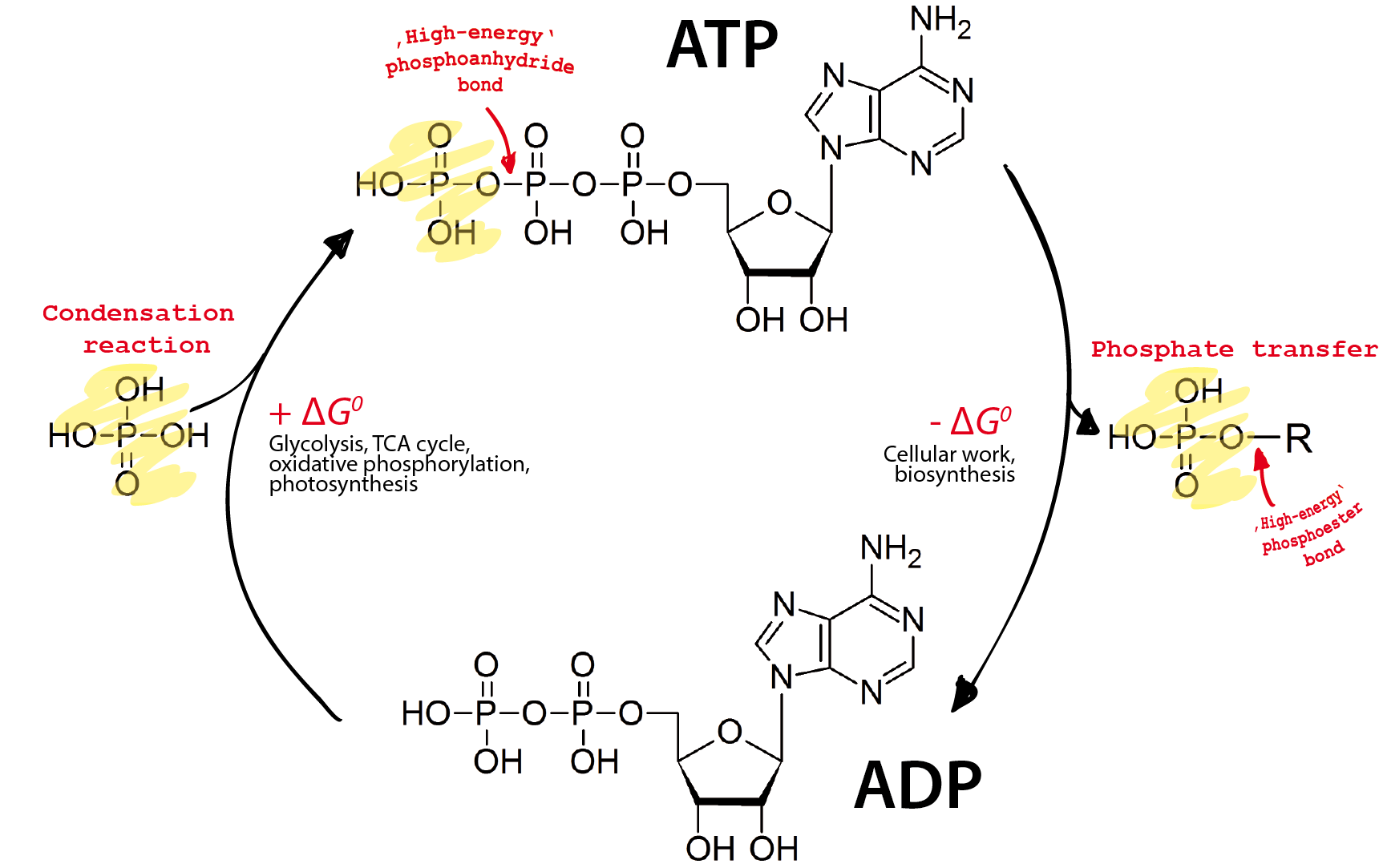
Which of these does not have a high energy phosphate bond?
(A) Creatine phosphate
(B) GTP
(C) ATP
(D) AMP
Answer
490.8k+ views
2 likes
Hint: The cell carries out many functions of metabolism for its growth and development. So, the energy must be required for it to do the metabolism. The mitochondria produce the energy in the form of ATP and hence they are known as the powerhouse of the cell.
Complete Answer:
(A) Creatine phosphate:
It is also known as phospho creatine. This generates the molecule of ATP by its combination with the molecule of ADP. In this process, it transfers its high energy phosphate bond to the ADP. And the end product is ATP and the creatine.
(B) GTP:
It is similar to the ATP molecules. These are energy rich and are involved in the process of energy transfer within the cell. Each turn of the Krebs’s cycle involves a single GTP molecule.
(C) ATP:

The full form of ATP is adenosine triphosphate. It is the energy rich molecule and it is called the energy currency of the cell. It has the adenine, ribose and the triphosphate molecule. They have the high energy bond between the triphosphate groups and release high energy when they break.
(D) AMP:
In the AMP molecule, there is the ester bond between the ribose sugar and the alpha phosphate groups. This bond does not possess high energy.
Of the given options, ATP, ADP and creatine phosphate have high energy phosphate bonds but AMP do not have this high energy bond.
Thus, the correct option is (D).
Note: All the energy molecules like ADP, AMP and the creatine phosphate at last convert into the ATP. Because ATP are the energy molecules which provide energy to the cell and its organelles to do all the functions necessary to carry out the process of metabolism.
Complete Answer:
(A) Creatine phosphate:
It is also known as phospho creatine. This generates the molecule of ATP by its combination with the molecule of ADP. In this process, it transfers its high energy phosphate bond to the ADP. And the end product is ATP and the creatine.
(B) GTP:
It is similar to the ATP molecules. These are energy rich and are involved in the process of energy transfer within the cell. Each turn of the Krebs’s cycle involves a single GTP molecule.
(C) ATP:

The full form of ATP is adenosine triphosphate. It is the energy rich molecule and it is called the energy currency of the cell. It has the adenine, ribose and the triphosphate molecule. They have the high energy bond between the triphosphate groups and release high energy when they break.
(D) AMP:
In the AMP molecule, there is the ester bond between the ribose sugar and the alpha phosphate groups. This bond does not possess high energy.
Of the given options, ATP, ADP and creatine phosphate have high energy phosphate bonds but AMP do not have this high energy bond.
Thus, the correct option is (D).
Note: All the energy molecules like ADP, AMP and the creatine phosphate at last convert into the ATP. Because ATP are the energy molecules which provide energy to the cell and its organelles to do all the functions necessary to carry out the process of metabolism.
Recently Updated Pages
Basicity of sulphurous acid and sulphuric acid are

Master Class 12 Economics: Engaging Questions & Answers for Success

Master Class 12 Maths: Engaging Questions & Answers for Success

Master Class 12 Biology: Engaging Questions & Answers for Success

Master Class 12 Physics: Engaging Questions & Answers for Success

Master Class 4 Maths: Engaging Questions & Answers for Success

Trending doubts
Give 10 examples of unisexual and bisexual flowers

Draw a labelled sketch of the human eye class 12 physics CBSE

a Tabulate the differences in the characteristics of class 12 chemistry CBSE

Differentiate between homogeneous and heterogeneous class 12 chemistry CBSE

Why is the cell called the structural and functional class 12 biology CBSE

Differentiate between insitu conservation and exsitu class 12 biology CBSE




